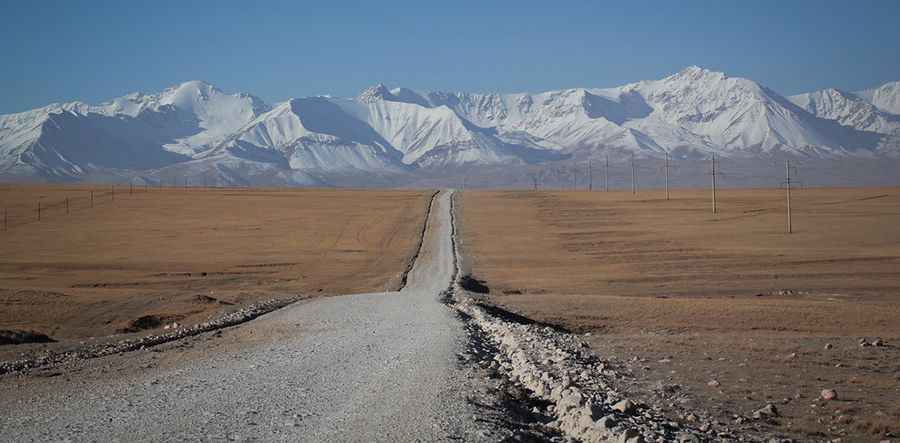Torugart Pass is a challenging border crossing between Kyrgyzstan and China
Torugart Pass is a high mountain pass at an elevation of 3.752m (12,310ft) above sea level, located on the border of Kyrgyzstan and China. It’s one of the highest roads of the country.

Is difficult to cross the Torugart Pass?
Set high in the Tian Shan mountain range, Torugart is one of Asia’s most unpredictable border posts. There is a ton of paperwork, permits, invitations and checkpoints all the way from Naryn in Kyrgyzstan to Kashgar in China. Without the right preparation, things can go terribly wrong. Even the most painstaking arrangements can be thwarted by logistical gridlock on the Chinese side or by unpredictable border closures (eg for holidays, snow or heaven knows what else). This remote mountain pass is one of two border crossing between Kyrgyzstan and China and it’s billed as one of the most logistically difficult international borders to cross in the world. The pass opens only from 9h - 13h to cross from Kyrgyzstan to China - and from 14h to 18h to cross from China to Kyrgyzstan. It is closed on weekends and holidays - also closed sometimes in winter-. The special regulations and the remoteness of the border post can make this one a daunting experience for the unwary independent traveler. Travelers have often been turned back for not having the right documents. On the contrary, some travelers with no documents seem to have breezed through, breaking all the supposedly inflexible regulations on the way. It is highly unpredictable but we do not suggest that you take any risks. It can all be done in a reliable fashion.
Is the Torugart Pass paved?
The pass links the Naryn Province of Kyrgyzstan (A365 road) and the Xinjiang Autonomous Region of China (S212 road). The road is mostly paved, with unpaved sections on the highest parts.
Is the Torugart Pass open?
This road is theoretically kept open all year, but it's icy and dangerous in winters. It’s normally snow-free from late May through to September. It can close anytime due holidays on either side, or too much traffic. The Chinese side of the pass is a forlorn, high altitude desert landscape where perhaps the border guards have been sent in punishment for indiscretions in more hospitable climes. However, on literally rounding a corner after the no man’s land on the way into Kyrgyzstan, you’ll find the Kyrgyz guards enjoying much more salubrious scenery; lush green mountain meadows undulate away to the horizon, like a cinematic idyll or dramatic extrapolation of a child’s drawing. You’ll be smiling and breathing in deep while setting up camp with this soul-lifting treat spread before you, and the rest of stunning Kyrgyzstan beyond. Most of the traffic through the pass is trucks carrying scrap metal and animal hides from Kyrgyzstan, or porcelain, thermoses, beer and clothing from China. The trucks accumulate in huge tailbacks at both sides, for 500m or more in the mornings. Usually groups and travellers have to switch vehicles on the border line. That means you have to use Chinese transport on Chinese side and Kyrgyz transport on Kyrgyzstan side. The switch is done at the border line of the neutral zone. At this point you have already left one country but haven't entered another.
When was the Torugart Pass built?
The pass is known as the favorite crossing for the caravans along the Silk Road and marauding armies of Genghis Khan. The first modern road along the route was built in 1905 by Russians for trade purposes. Wildly scenic, this pass winds its way from the rugged south of Kyrgyzstan through the snow-capped Tian Shan Mountains to the far western reaches of China. It is remote and deserted, and sees relatively few foreigners due to the extraordinary bureaucratic procedures required to get across it. No fewer than five separate checkpoints, with gun-toting soldiers at each checking your documents, luggage checks, x-rays, form filling and long waits.
More info&pic: http://eurasia.travel/kyrgyzstan/cities/central_kyrgyzstan/torugart_pass/